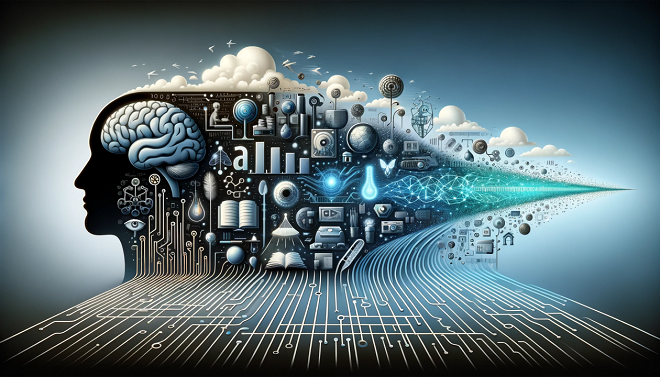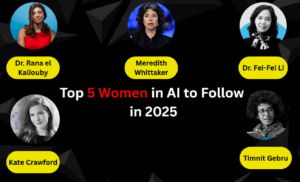In recent years, the term “Artificial Intelligence” (AI) has predominantly been associated with software-driven technologies—think algorithms that can sift through massive datasets, virtual assistants that respond to queries, or recommendation engines that predict consumer behavior. However, a transformative shift is underway with the rise of Physical AI, where intelligent machines extend their capabilities beyond the digital realm and into the physical world. This evolution represents a significant milestone in the development of technology, blurring the lines between human and machine interactions and redefining the landscapes of various industries.
Understanding Physical AI
Physical AI refers to intelligent machines equipped with advanced sensory and cognitive capabilities that allow them to perceive, interpret, and interact with their physical environments. These machines utilize a combination of machine learning, robotics, computer vision, and sensor technology to execute tasks that require a degree of understanding of the physical world. Unlike traditional AI systems that operate purely in the digital domain, Physical AI is concerned with making decisions and performing actions in real-world settings.
Key Components of Physical AI
- Sensors and Perception: At the core of Physical AI are sensors that enable machines to gather information about their environment. These can include cameras, microphones, LIDAR, and other sensors that mimic human senses. This sensory input allows machines to understand their surroundings and react accordingly.
- Machine Learning: Physical AI relies on advanced algorithms that allow machines to learn from their experiences and improve their performance over time. These algorithms can process vast amounts of data, enabling the machine to make informed decisions based on past interactions.
- Robotics: The physical embodiment of AI is achieved through robotics, where machines can manipulate objects, navigate spaces, and perform complex tasks. Advances in robotics have led to the development of agile robots that can operate in unpredictable environments, from manufacturing floors to homes.
- Cognitive Computing: Cognitive computing enhances Physical AI by allowing machines to reason, learn, and even understand human emotions. This capability enables more nuanced interactions between humans and machines, fostering collaboration rather than competition.
Applications of Physical AI
The implications of Physical AI are far-reaching, touching numerous sectors:
- Healthcare
In healthcare, Physical AI is revolutionizing patient care. Robotic assistants are increasingly being used in surgeries, providing precision and efficiency that enhance surgical outcomes. Furthermore, AI-powered robots can assist in rehabilitation, offering personalized therapy programs based on patient data. They can also help in elderly care, providing companionship and monitoring health metrics to alert caregivers in case of emergencies.
- Manufacturing and Industry
Physical AI is also making significant inroads in manufacturing. Autonomous robots are now commonplace in factories, working alongside humans to streamline production processes. These robots can perform repetitive tasks with high accuracy, freeing human workers to focus on more complex problem-solving and creative tasks. Predictive maintenance, powered by AI, is another application that minimizes downtime by forecasting equipment failures before they occur.
- Agriculture
In agriculture, drones equipped with AI technology are transforming the way farmers monitor and manage crops. These drones can assess crop health, optimize irrigation, and even assist in planting seeds. Autonomous tractors and harvesters are also being developed, making farming more efficient and sustainable.
- Transportation
The transportation sector is experiencing a revolution due to Physical AI. Autonomous vehicles, including cars and drones, are being tested and gradually introduced into everyday life. These vehicles rely on a combination of sensors and AI to navigate roads and traffic, promising to reduce accidents and improve traffic flow. Delivery drones are also emerging as a solution for last-mile logistics, offering quick and efficient package delivery.
- Smart Homes and Cities
Physical AI is key to the development of smart homes and cities. In homes, AI-powered devices can learn user preferences, optimize energy use, and enhance security. Smart city initiatives utilize AI to manage traffic flow, reduce energy consumption, and improve public safety through surveillance and data analysis.
Challenges and Considerations
Despite its immense potential, the rise of Physical AI raises several challenges. Ethical concerns about job displacement, privacy, and security must be addressed as these technologies become more integrated into society. Additionally, ensuring the safety and reliability of physical AI systems is paramount, particularly in sensitive areas like healthcare and transportation.
Moreover, there is the risk of over-reliance on machines. As AI takes on more responsibilities, maintaining human oversight and control becomes critical to prevent unintended consequences.
What Lies Ahead?
The rise of Physical AI represents a pivotal moment in the evolution of technology. As intelligent machines become increasingly capable of interacting with the physical world, they offer transformative possibilities across various sectors. While the journey is fraught with challenges, the potential benefits—ranging from improved efficiency and productivity to enhanced quality of life—are immense. As we continue to navigate this new landscape, it will be essential to balance innovation with ethical considerations, ensuring that the integration of Physical AI serves humanity in meaningful ways. The future is not just about intelligent machines; it’s about intelligent machines working alongside us to create a better world.
Read more: Physical Intelligence Lands $400M to Boost Generalist Robot AI, Valued at $2B
















